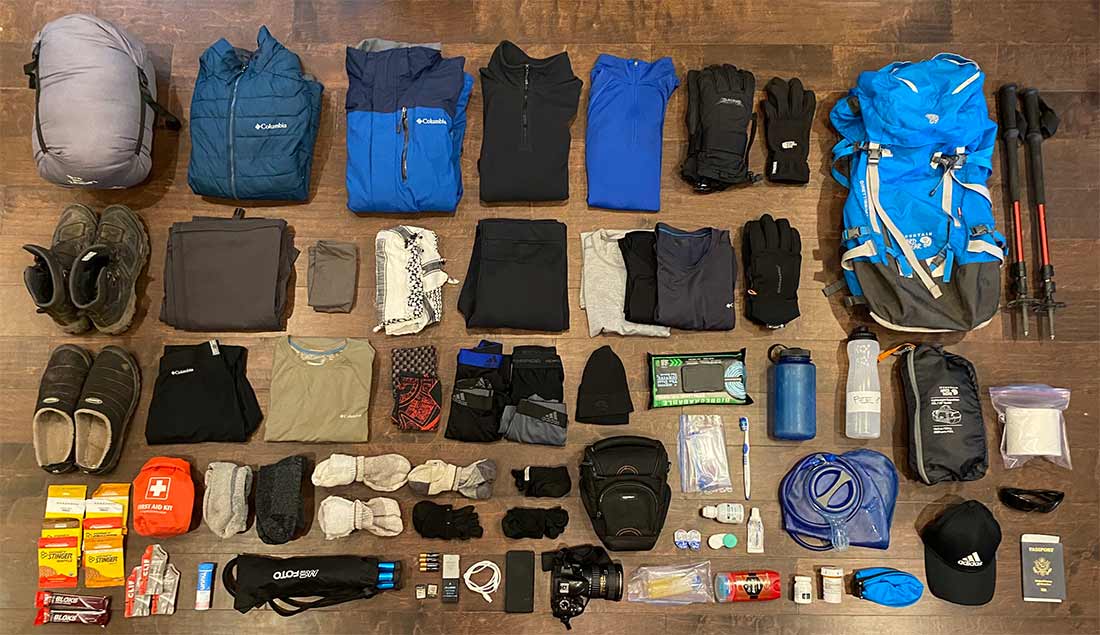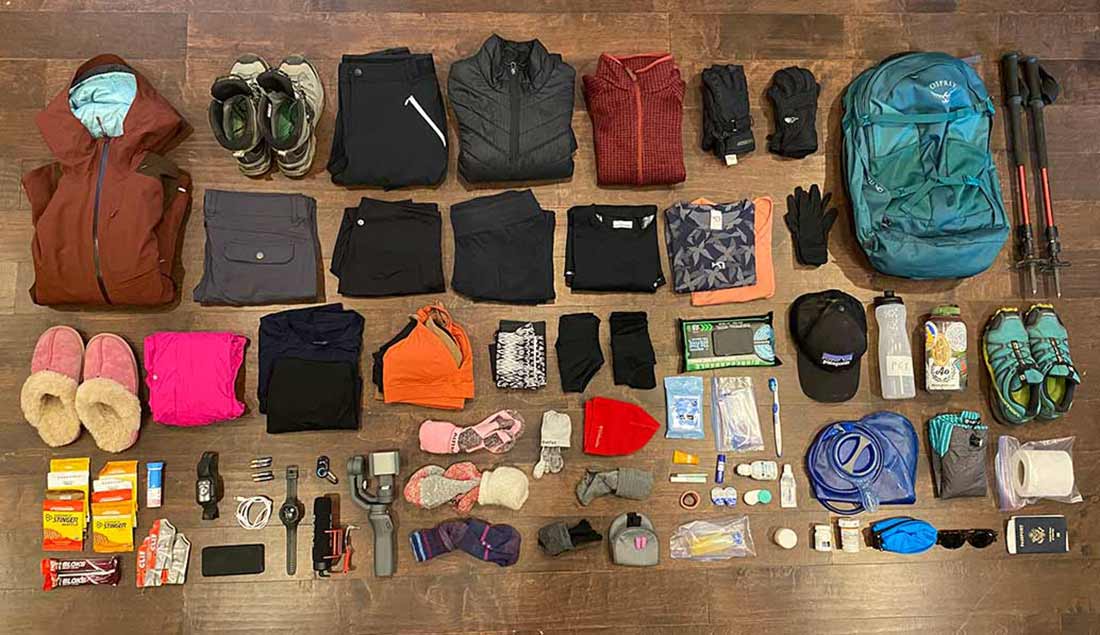HOW TO PREPARE FOR KILIMANJARO
W hen you begin to prepare for Kilimanjaro the first thing you should do is find a reputable operator. Once you find them, submit a booking request form. Make your deposit once you are happy with your itinerary. After you receive a trip confirmation email, book your flights. Your destination airport is Kilimanjaro International Airport (JRO). Furthermore, we recommend arriving at least the morning before your climb or ideally the evening two days before your climb starts. Booking this rest day allows for any flight delays and any delayed or lost bags. This also gives you a day to recover from the long flight and attend the trip briefing. We can arrange additional nights at the lodge if needed.
Secondly, you do not need to exchange your money for Tanzanian Shillings. US Dollars are accepted everywhere in Tanzania. We recommend bringing $700-$800 USD for your trip or a bit more if you booked a safari after the climb. The bills should be 2009 and newer, undamaged bills. They should be an assortment of $100s, $20s, $5s, and at least 40 in $1s.
Using $100s for the Kilimanjaro climb tips so the exchange rate is better for conversion.
Finally, begin training and gathering the gear that you’ll need on Kilimanjaro, around town, and potentially on safari.

KILIMANJARO TRAINING
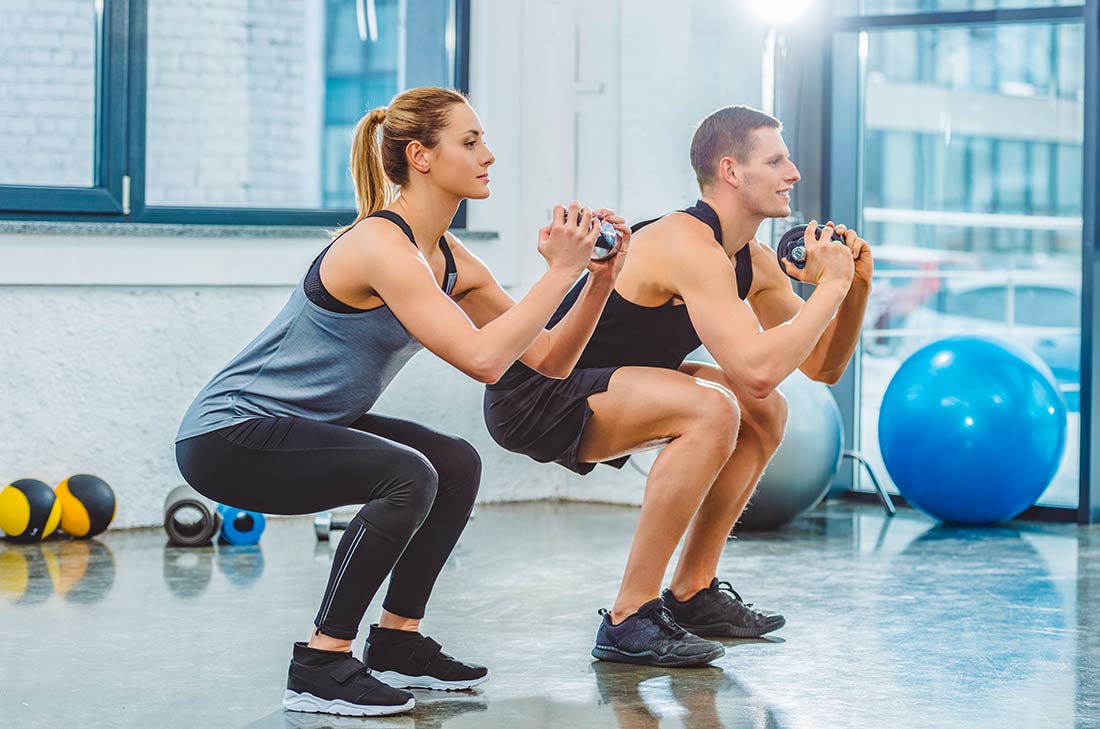
T raining is very important to do before you head to Kilimanjaro. Science has not specifically pinpointed the cause of altitude sickness, but being fit will definitely reduce the wear and tear on your body as you ascend Kilimanjaro. This will reduce the stress on your body and in turn, allow you to better adapt to the extreme elevation.
Most of our clients have never hiked for so many consecutive days at such high elevations. We strongly encourage you to be in great shape. The daily hike is at a slow pace and most days end in the early afternoon, however, the combination of physical activity, lack of sleep, poor appetite, dehydration, weather, and elevation are working against you. As you ascend toward the summit, your physical and mental aptitude will be tested.
We recommend training a minimum of eight weeks before your climb. 12 weeks is better. You may require more or less depending on your current fitness and your hiking skill. Click on the orange bars to see our recommended training regiment. Keep in mind that hiking should be the focus of your training. Hike as much as you can. It is much more effective than weight training.
Make a training schedule and force yourself to do it each day. Your trip will arrive quicker than you expect.
- Day 1: Hike or StairMaster for at least one hour
- Day 2: Light leg workout with weights, cycling, or jogging
- Day 3: Hike or StairMaster for at least one hour
- Day 4: Rest
- Day 5: Open day to do any exercise you like
- Day 6: Hike or StairMaster for at least one hour
- Day 7: Rest
Notes: For your hikes and StairMaster training wear a daypack with 8-10 pounds in it.
Build your foundation of strength and endurance. Try to keep workouts challenging and fun.
- Day 1: Hike or StairMaster for at least one hour
- Day 2: Moderate leg workout with weights
- Day 3: Hike or StairMaster for at least one hour
- Day 4: Rest
- Day 5: Open day to do any exercise you like
- Day 6: Hike for at least three hours with a weighted pack
- Day 7: Rest
Notes: Increase the weight in your daypack to about 20 pounds. At least once a week do a long hike of eight hours. Work in overnight backpacking so you get used to sleeping outdoors.
You have reached a month before your trip. Your workouts should be more intense. Increase the weight of your pack, hike faster, and challenge yourself.
- Day 1: Hike or StairMaster for at least one hour
- Day 2: Hard leg workout with weights
- Day 3: Hike or StairMaster for at least one hour
- Day 4: Light leg workout with weights, cycling, or jogging
- Day 5: Open day to do any exercise you like
- Day 6: Hike for at least four hours with a weighted pack
- Day 7: Rest
With two weeks to go, you should start to reduce your training to prevent injury. Now you just want to maintain your endurance and strength. Make sure to get as much sleep as possible to allow your body to recover before you begin your trip.
- Day 1: Hike or StairMaster for at least one hour
- Day 2: Light leg workout with weights, cycling, or jogging
- Day 3: Hike or StairMaster for at least one hour
- Day 4: Rest
- Day 5: Open day to do any exercise
- Day 6: Hike or StairMaster for at least one hour
- Day 7: Rest
GEAR LIST
I t is very important to bring the proper items to climb Kilimanjaro. We will check your gear at the trip briefing before you start the trek. If you are missing any essential items we will take you to a rental shop before the mountain. Our guides have climbed Kilimanjaro many times, some more than 300 times. Listen to them and make sure you pack everything you need.
During your trek, you will encounter many different types of weather and a wide range of temperatures. The clothing layers you bring must be able to adapt to the changing environment. Below is our recommended gear list. You are required to bring all the necessary items for your climb. Note that some items may be rented from us on location and some are optional, but highly recommended.
Kilimanjaro Sunrise will provide your sleeping tent, sleeping pad, dining tent, tableware, food, and clean water. If you would like to have a private toilet tent, it can be rented. See here: https://youtu.be/cxZopwU1_8g
WHAT TO WEAR
Clothing
- Warm, Waterproof Jacket – Shell
- 1 Soft Jacket, Fleece or Soft-shell
- Lightweight Rain Jacket
- 2 Long Sleeve Shirt, moisture-wicking fabric
- 2-3 Short Sleeve Shirt, moisture-wicking fabric
- 1 Waterproof Pant
- 1-2 Hiking Pants/Convertibles
- 1 Fleece Pants (highly recommended)
- 1 Short (optional)
- 1 Base Layer, moisture-wicking fabric
- 3-4 Underwear, moisture-wicking fabric
- 2 Sports Bra (women)
Technical Equipment
- 1 Sleeping Bag, at least 0° F (Rental: -15° F)
- 1 Trekking Poles, collapsable (highly recommended)
- 1 Headlamp, with extra batteries
- 1 Duffel Bag, 70-90L, for porters to carry your gear
- 1 Day pack, 30-35L, for you to carry personal gear
Accessories
- 1 Sunglasses
- 1 Backpack Cover, waterproof (optional)
- 1 Water Bottle (Nalgene, 32 oz.)
- 1 Water Bladder (3 liters)
- 1 Pee Bottle, to avoid leaving the tent at night
- Stuff Sacks, Dry Bags, or Ziploc Bags, of various sizes, to keep gear dry and separate
Handwear
- 1 Gloves, waterproof and windproof
- 1 Gloves, thin
Headwear
- 1 Cap or Hat, for sun protection
- 1 Beanie
- 1 Balaclava/Buff, face coverage for wind, sun, and dust
Footwear
- 1 Hiking Boots, warm, waterproof, broken-in
- 1 Gym Shoes, to wear at camp (optional)
- 4-5 Socks, wool, or synthetic
- 1 pair of Gaiters, (optional)
- Camp Slippers (optional)
Other
- Toiletries
- Prescriptions – Malaria tablets, Diamox (optional). Diamox may make you susceptible to sunburn
- Sunscreen
- Lip Balm
- Insect Repellent
- First Aid Kit
- Painkillers (optional)
- Blister kit (optional)
- Anti-diarrhea tablets (optional)
- Hand Sanitizer
- Toilet Paper
- Wet Wipes (recommended)
- Snacks, lightweight, high calorie (optional)
- Electrolytes, powder, or tablets (optional)
- Camera, with extra batteries (optional)
- Hand warmers (optional)
Paperwork
- Immunization Papers
- Trip Receipt
- Passport
- Visa (available to JRO)
- Insurance Documents
Available to rent and pay for in cash at the trip briefing
VACCINATIONS

I f you are going to Tanzania from The United States, there are no required vaccinations. However, the US Center for Disease Control and Prevention (CDCP) recommends the following vaccinations and medications:
- Malaria
- Yellow Fever (required if entering Tanzania from an ‘infected area’ such as Kenya)
- Typhoid
- Hepatitis A
- Hepatitis B
- Rabies
Additionally, the CDCP recommends routine vaccinations for measles/mumps/rubella (MMR), diphtheria/pertussis/tetanus (DPT), and polio, if you are not up to date.
Consult with your doctor before traveling to Tanzania.
We strongly recommend that you bring:
- Diamox – FDA-approved prescription used to prevent and treat altitude sickness. It may make you susceptible to sunburn.
- Ciprofloxacin – powerful anti-diarrhea medication
- Doxycycline, Mefloquine – or another anti-malarial drug, designed to prevent or cure malaria
- Ibuprofen – a nonsteroidal anti-inflammatory drug to treat headaches (do not use aspirin since it thins your blood)
Having these four medications in your kit covers you for the most common medical conditions experienced on the mountain. Prescription medications are not readily available in Tanzania, so you should obtain these items before your trip. Note that our guides do not carry and will not administer medications. Please let the guide know before you plan on taking any of these medications.
Every client should have a medical check-up to see whether he or she has any medical conditions that increase the risks of trekking at high altitudes. All clients 65 years of age or older are required to bring a doctor’s note stating they are fit to climb Kilimanjaro.
TRAVEL INSURANCE & DOCUMENTS
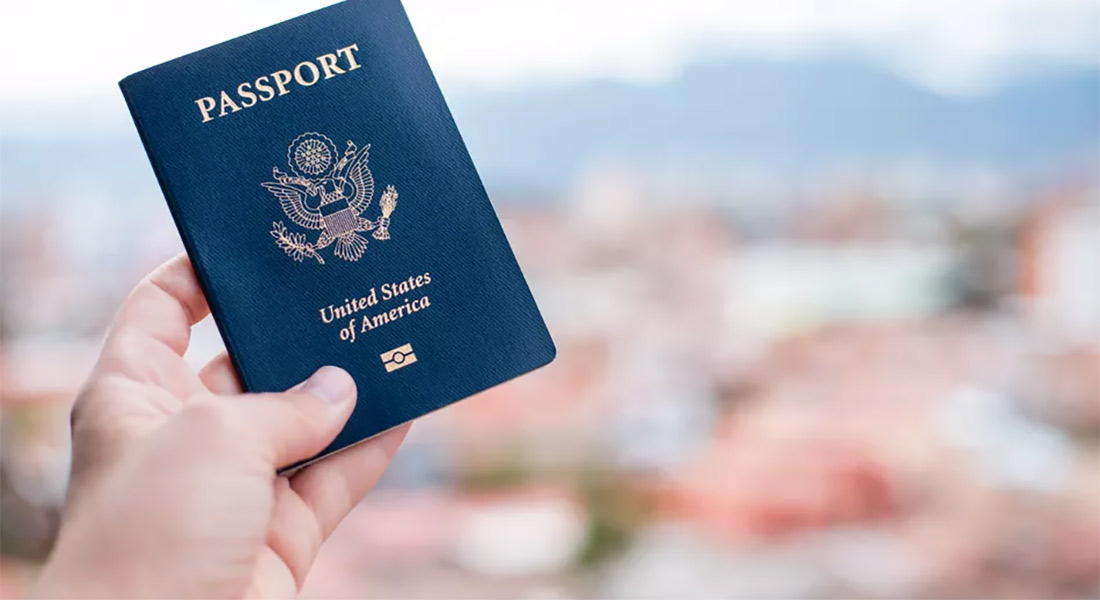
PASSPORT AND VISA
A passport and visa are required to travel to Tanzania for most citizens, including clients from the United States, the United Kingdom, and other European Union countries, Australia, New Zealand, and Canada.
The passport must be valid for 6 months after the intended length of stay. For example; Your departure date from Tanzania is January 30th, so your passport should be valid until July 30th.
Visas can be obtained prior to departure from the Tanzanian embassy or at points of entry into Tanzania including Kilimanjaro Airport. The visa cost for US citizens is $100 and $50 for others. The visa must be paid for in USD only. No other currency or credit card is accepted.
Obtaining a visa at Kilimanjaro Airport is a relatively simple process. Once you enter the arrival side of the airport. You’ll fill out arrival documents and approach the visa line. They will take the documents, and your passport and direct you to the line to your left. In that line, you’ll get your photo taken and then move to the third line to your left. There you’ll pay for the visa.
TRAVEL INSURANCE
T ravel insurance is mandatory to climb with Kilimanjaro Sunrise. Insurance provides you with coverage against unforeseen circumstances. Deposits are nonrefundable upon trip confirmation and balance payments are nonrefundable within 30 days of the trip start date.
Travel insurance may cover your trip costs if you have to cancel your trip due to the following situations:
- Flight cancellations or delays
- Injury or illness – most travel insurance does not cover COVID
- Loss of a loved one
- Unemployment
Other items that are reimbursed by travel insurance:
- Lost or delayed luggage if replacements are rented
- Traveling expenses
- Hospital costs
- Evacuation
You must have a valid travel insurance policy to climb with us. Travel insurance should cover high-altitude trekking up to 6,000 meters. This is not mountaineering. It should also cover medical, repatriation costs, and trip cancellation. Without travel insurance, helicopter evacuation and medical treatment may be denied.
TIPPING

T ipping in Tanzania is customary. We are proud to be members of the Kilimanjaro Porters Assistance Project. These are their tipping guidelines for how to tip on Kilimanjaro, in town, and on safari.
The graph below will help you determine the tipping amount for the Kilimanjaro mountain staff.
Consequently, the total number of staff depends on how many climbers are in the group and the number of days on the mountain.
Subsequently, we will cover tipping more in-depth at the trip briefing. If you want to know the number of people on your climb, keep an eye on it on the Dates and Prices page.
We book a total of 10 people on our group climbs. On the other hand, on a private climb, we can book as many as you like.
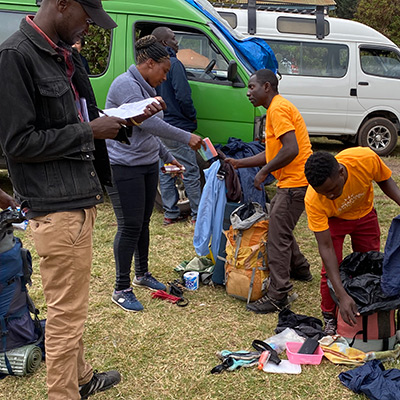
TIPPING GUIDELINES
At the trip briefing, you will be given instructions on how the tipping process works. The tips will be for the guides, cooks, and porters. Most groups discuss their tipping amounts collectively. The tips will be distributed to the crew. The table below shows the amount per person.
| GROUP SIZE | 6 DAYS | 7 DAYS | 8 DAYS | 9 DAYS |
|---|---|---|---|---|
| 1 | 570 | 665 | 760 | 855 |
| 2 | 495 | 578 | 660 | 743 |
| 3 | 390 | 455 | 520 | 585 |
| 4 | 338 | 394 | 450 | 506 |
| 5 | 354 | 413 | 472 | 531 |
| 6+ | 325 | 379 | 433 | 488 |
This tipping procedure conforms to the guidelines set forth by the Kilimanjaro Porters Assistance Project. We have found this to be the most practical and transparent method for tipping.
- Guide / Assistant Guide: $25 per day / per group
- Cook: $15 per day / per group
- Summit Porter $15 per day / per group
- Porter: $10 per day / per group
Please note: The number of guides, cooks, and porters varies depending on the number of people in your group, whether or not you rented private toilets, and if you bring too much gear and the Park dictates that you need additional porters.
TIPPING ON SAFARI
The general guideline for tipping during the safari is $25-$30 per day for the guide. For example, on a 5-day safari, a good tip for the guide is $125-$150 regardless of the number of passengers.
MOUNTAIN STAFF
Furthermore, our mountain staff-to-client ratio is one of the best on Kilimanjaro. For instance, you’ll have your own porter alongside you as well as all the guide and assistant guides on summit night. The graph below gives you an idea of how many guides and porters will be on your climb.
| CLIENTS | GUIDE | ASSISTANT GUIDE(S) | COOK(S) | PORTERS | SUMMIT PORTERS |
|---|---|---|---|---|---|
| 1 | 1 | 0 | 1 | 4 | 1 |
| 2 | 1 | 1 | 1 | 7 | 2 |
| 3 | 1 | 1 | 1 | 2 | 2 |
| 4 | 1 | 1 | 1 | 13 | 2 |
| 5 | 1 | 2 | 1 | 16 | 3 |
| 6 | 1 | 2 | 1 | 19 | 3 |
| 7 | 1 | 2 | 1 | 21 | 4 |
| 8 | 1 | 3 | 1 | 24 | 4 |
| 9 | 1 | 3 | 1 | 27 | 4 |
| 10 | 1 | 3 | 2 | 30 | 4 |
TIPPING IN TANZANIA
Likewise, people will carry your bags at various times throughout the trip. For example, a person will carry your bag at the lodge from the taxi to the lobby or your room. You can tip each person $1 USD if you like.







